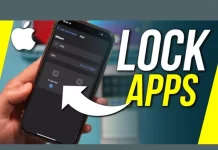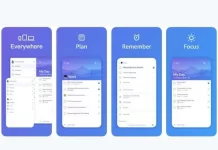A recent survey found the average amount of time spent on a smartphone each day was nearly five hours. Across the globe in 2021, mobile users spent a collective 3.8 trillion hours on their phones.
This isn’t great news for the physical and mental health of the broader population. But it does present an interesting opportunity for marketers.
Effectively leveraging this screen time is a great way to boost profit. But how do you do that?
It’s simple. Digital marketing.
However, digital marketing can often be confused with its peer, content marketing. Sometimes, well-meaning but incorrect marketers play these two methods against each other. They argue for one method over the other in a bizarre ‘Content Marketing vs. Digital Marketing’ boxing match.
But what is digital marketing? And how can content marketing work within a digital marketing strategy?
Don’t worry! We’ve prepared this digital marketing guide to help you. Read on to discover how content and digital marketing can work together.
Content Marketing vs. Digital Marketing
Content marketing and digital marketing play very different roles. But they are complementary.
One is not better than the other.
The truth is that these two methods work best when used in tandem. Digital marketing and content marketing, when used well, can form a comprehensive and effective marketing strategy.
But don’t start mapping out your marketing plan just yet. First, you need to understand what content and digital marketing are and how they are different from each other.
Let’s take a look at content marketing first.
What Is Content Marketing?
From articles and blogs to videos and images, content can be a potent marketing tool.
As such, content marketing is as its name suggests. It uses various forms of content to garner the attention of target audiences.
Simple, right? Well, not quite.
Content is often used as the first touch-point to draw potential customers in. As such, content is commonly created in conjunction with extensive market research. This helps marketers determine what kinds of topics and images resonate most with their target audiences.
In an ideal world, members of the target audience would make a purchase immediately after encountering the content.
For example, a company is trying to sell a cordless vacuum. In this scenario, the marketers would produce an article on the benefits of cordless vacuums and link it to the company website.
A member of their target audience – perhaps a stay-at-home parent – reads the article, follows the link, and purchases the vacuum. Simple!
However, it’s not always that easy.
More commonly, potential customers must go on a journey with the company before making a purchase. Marketers know this journey as the ‘marketing funnel’.
Most effective marketing funnels will utilize content at several points along the journey to purchase. However, there is a lot more to this journey than mere content.
This is where digital marketing comes into the picture.
What Is Digital Marketing?
Digital marketing focuses on strategies to reach potential customers online. As the folks at ETOS Consulting LLC like to say, an online footprint is vital in establishing a business as legitimate and trustworthy.
The goal of digital marketing is to convert your target audience into customers. As such, content marketing could feature as a tactic within a broader digital marketing strategy.
Still not sure what digital marketing is? Let’s break it down with some examples.
Digital marketing strategies may involve optimizing websites, content and advertisements for search engines, such as Google. This process is known as search engine optimization (SEO). SEO, when executed well, can increase the traffic to a website by helping it rank better on a search engine.
Another digital strategy is email marketing. It is often simple in theory but complex in practice.
Email marketers send advertising emails to the inboxes of existing and potential customers. It often begins with a customer signing up for a newsletter or providing their contact details in exchange for a piece of content or a discount.
The customer’s email address will be added to an email sequence. They will then receive regular communication from the company. Usually, this process is automated.
Other forms of digital marketing include:
– Pay-per-click advertising;
– Influencer marketing;
– Search engine marketing;
– Podcasting;
– Hosting webinars;
– Social media marketing; and
– Video marketing.
However, there are many more strategies in the digital marketers’ arsenal.
While these examples may differ, the ultimate goal is the same: converting your target audience into customers.
So What’s the Difference?
As mentioned above, content marketing is often used within a broader digital marketing strategy. In fact, content marketing can play a vital role in many elements of digital marketing.
Let’s use social media marketing as an example.
While sponsored ads on Instagram can be effective, the platform is primarily visual. Users are looking for curated images and videos.
You can show off your products or services on Instagram without needing to create a traditional ad. Instead, insert your products into curated Instagram posts. You can add product tags that take viewers straight to your website.
Simple and subtle!
Similarly, customers will get bored if you only send them advertisement-based emails. Liven up your email marketing sequence by including content within your emails or linking to content on your website.
Perhaps you could link to a video featuring your product? Or maybe you could include an article about why your services are necessary?
The opportunities to leverage content in your digital marketing are only limited by your creativity.
Putting Digital Marketing Into Practice
While you may have no desire to spend 5 hours on your phone every day, there are lots of people that do. Fusing content and digital marketing together can help your business leverage that screen time.
As you can see, it’s not a ‘Content Marketing vs. Digital Marketing’ boxing match with a winner that comes out on top.
Digital marketing without content to liven things up will get boring for your potential customers. But content without the strategic usage of digital channels will not get far.
You need both digital and content marketing.
Did you find this article helpful? If so, make sure to read more from our SEO and Business sections.

































